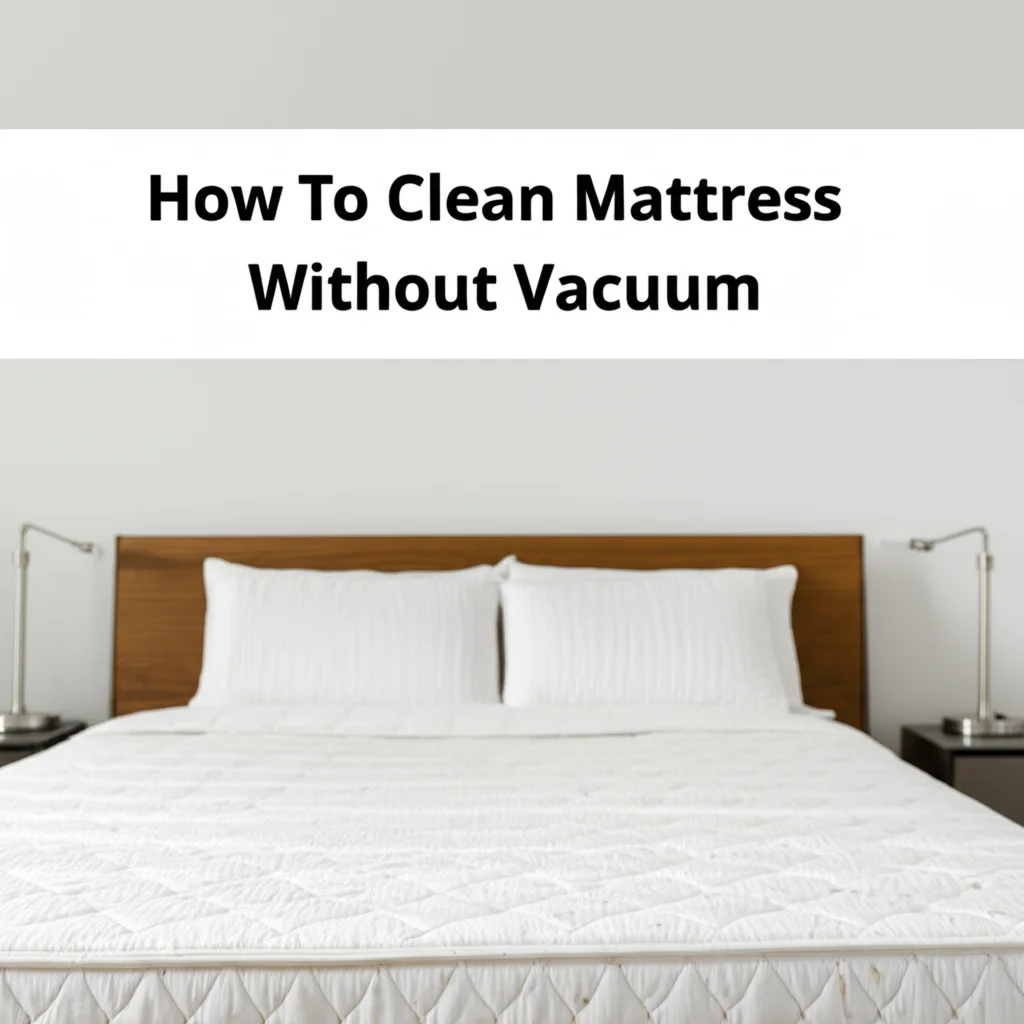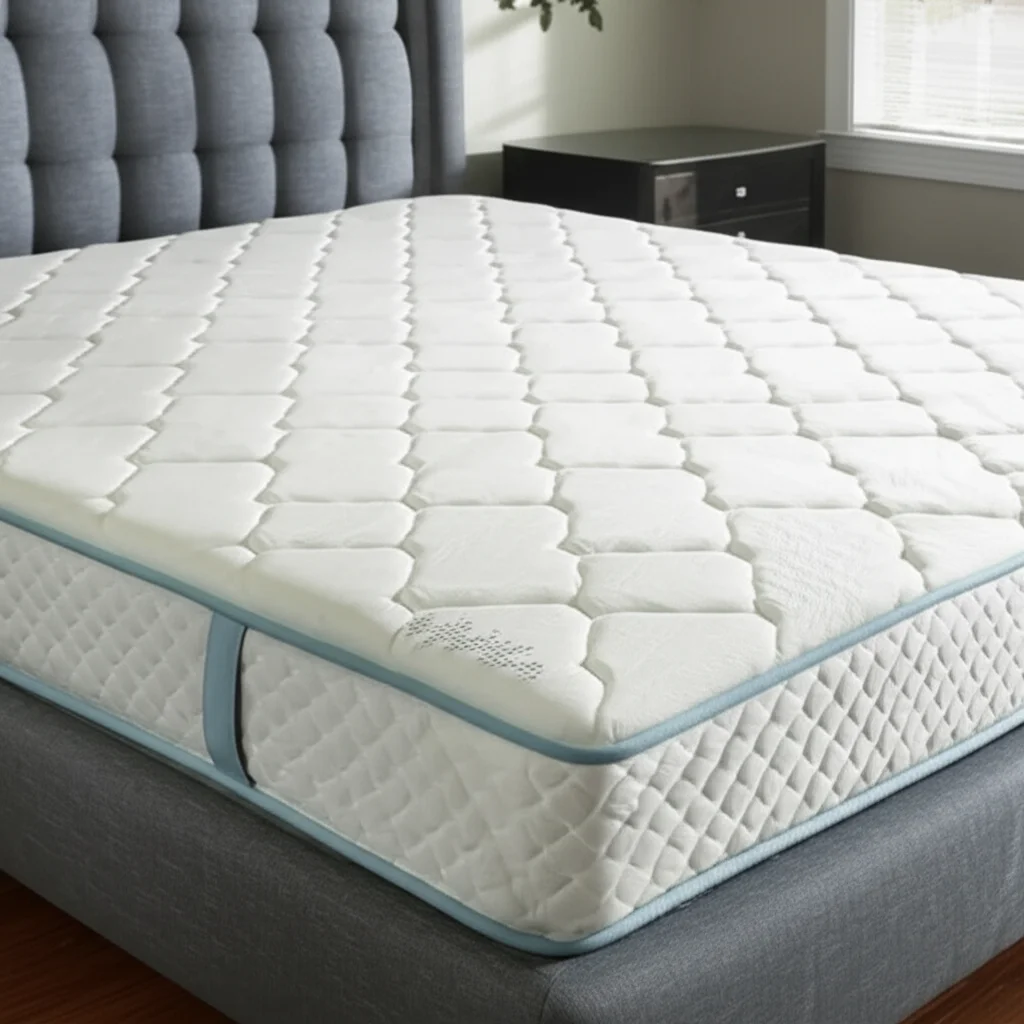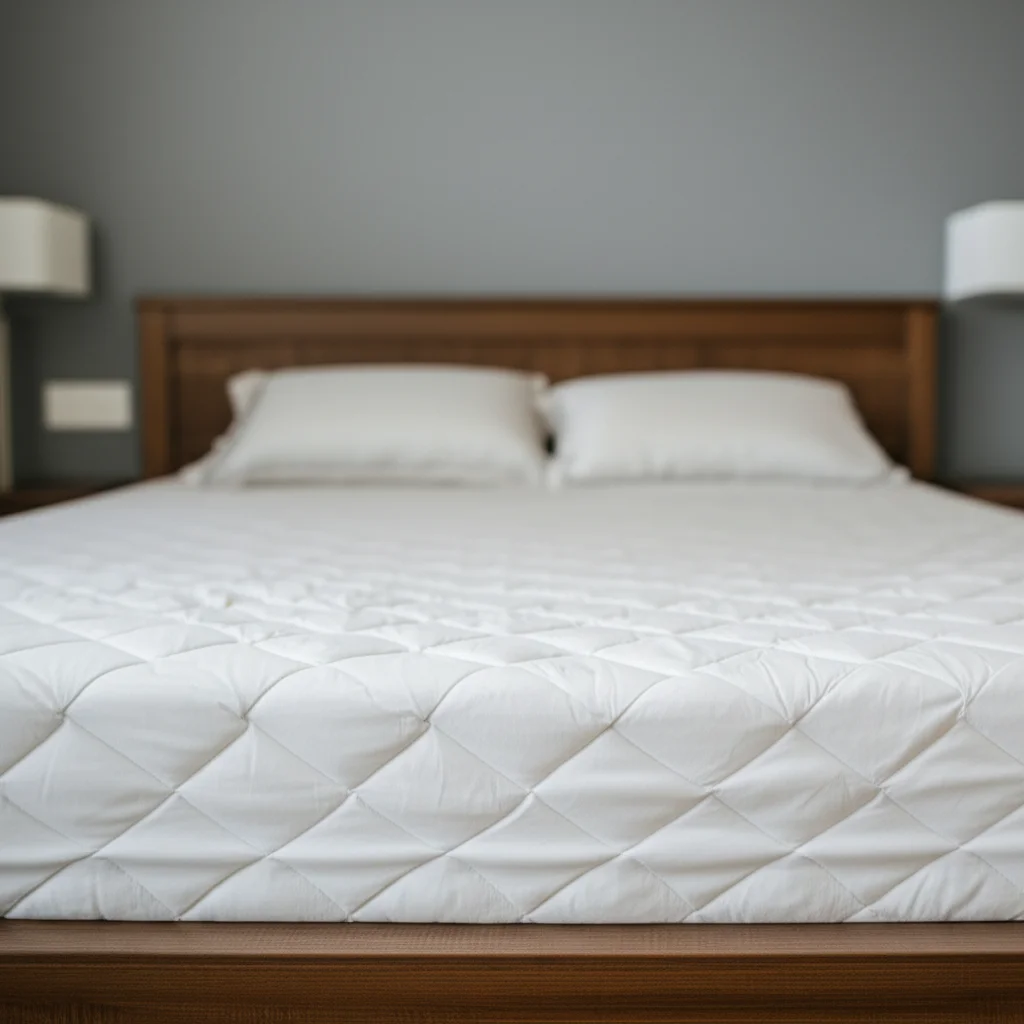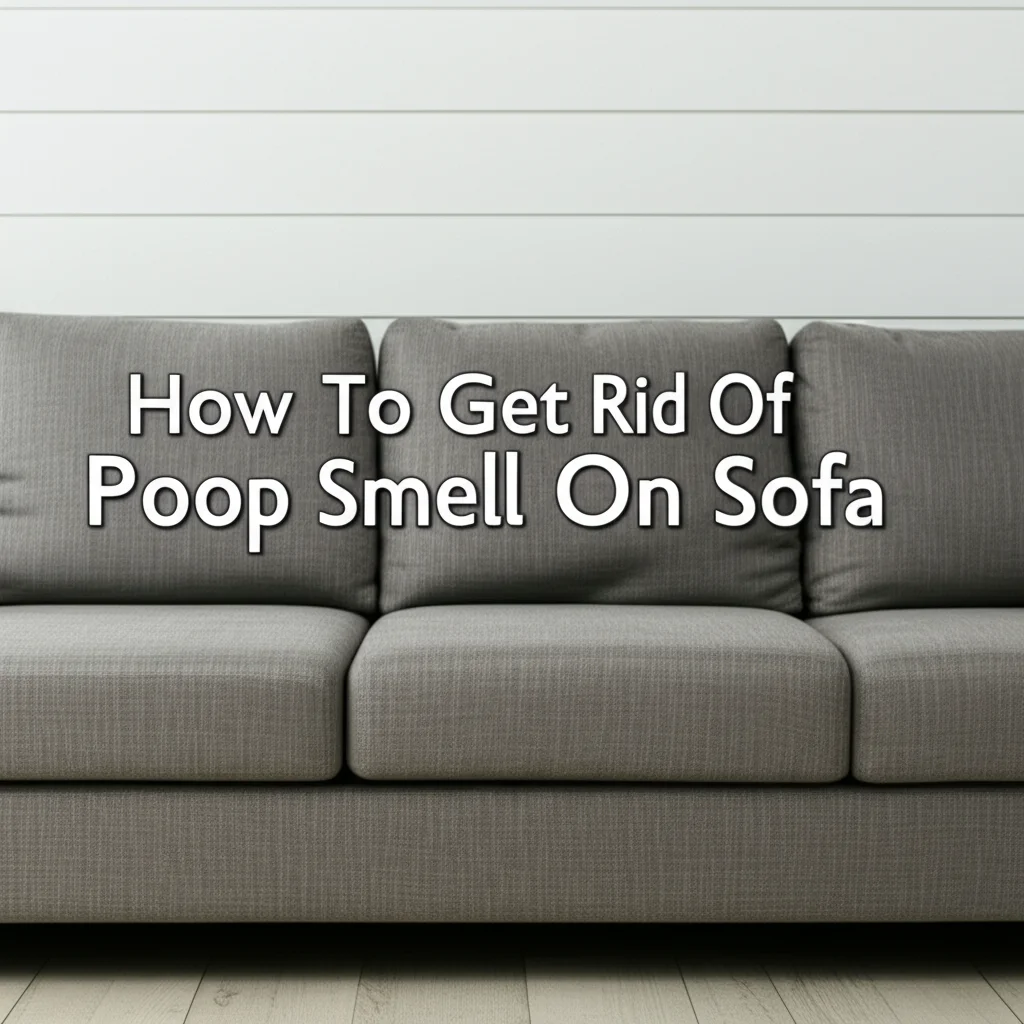· Todd Martin · Home Cleaning · 19 min read
How To Clean Mattress Without Vacuum

How To Clean Mattress Without Vacuum: A Comprehensive Guide
Imagine settling into a fresh, clean bed, free from dust and stale odors. Many people think a vacuum cleaner is essential for keeping a mattress tidy. But what if you do not own one, or your vacuum is broken? You might wonder how to maintain bed hygiene without this common tool.
I understand this challenge completely. It is a common misconception that mattress cleaning requires powerful suction. The good news is that you absolutely can achieve a wonderfully clean mattress without a vacuum. This article explains practical methods to remove dirt, tackle stains, and eliminate unpleasant smells. You will discover simple household items that make your mattress feel new again. Let us explore these effective, vacuum-free cleaning strategies together.
Takeaway: Cleaning your mattress without a vacuum is simple. You can use baking soda for odors and moisture. Spot clean stains with gentle solutions. Regular airing keeps your bed fresh.
Clear Answer to Main Query: You can clean a mattress without a vacuum by dry dusting, using baking soda to absorb odors and moisture, and spot cleaning stains with mild detergents or natural solutions like white vinegar. This process removes surface dirt, refreshes fabric, and tackles specific spills.
Why Clean Your Mattress Without a Vacuum? Understanding the Need
Maintaining a clean mattress is important for health and comfort. We spend many hours each night on our mattresses. Over time, mattresses collect dust, dead skin cells, sweat, and other particles. These can lead to odors and even attract dust mites. A clean mattress supports a healthier sleep environment.
Many people think a vacuum cleaner is the only way to remove these unseen particles. This is not true. Several reasons exist for needing to clean a mattress without a vacuum. Perhaps your vacuum cleaner is broken. Maybe you simply do not own one. Some mattress types, like memory foam, benefit from gentler cleaning methods that do not involve strong suction. Understanding these reasons helps you prepare for effective vacuum-free cleaning.
The air quality in your bedroom also improves with a clean mattress. Dust and allergens trapped in the mattress can become airborne. This causes issues for people with allergies or asthma. Cleaning your mattress regularly, even without a vacuum, reduces these triggers. It helps ensure a fresher and healthier space for rest. My own experience shows that a non-vacuum method can be just as effective in making my bed feel truly clean.
Furthermore, spills and accidents happen. A vacuum cannot effectively remove liquid stains or odors from a mattress. You need specific spot-cleaning techniques for these issues. Learning how to clean your mattress without a vacuum equips you with versatile skills. You can address immediate spills and perform routine maintenance. This knowledge saves you money and keeps your sleep space inviting.
Essential Tools and Supplies for Vacuum-Free Mattress Cleaning
You do not need many fancy tools to clean your mattress without a vacuum. Most items are already in your home. Having the right supplies ready makes the cleaning process smooth. You can achieve excellent results with simple, natural products. This approach saves you money and avoids harsh chemicals.
The most important item is baking soda. It is a powerful odor absorber and moisture reducer. White vinegar is another versatile cleaner. It disinfects and breaks down stains and odors. You will also need a few spray bottles for mixing solutions. These allow you to apply cleaners evenly without oversaturating the mattress.
Here is a list of other useful supplies:
- Clean cloths or sponges: Use white cloths to avoid color transfer to your mattress. Sponges work well for gentle scrubbing.
- Mild liquid dish soap or laundry detergent: Choose one that is gentle and colorless.
- A stiff brush or scrub brush: This helps loosen dry dirt and dislodge debris.
- Rubber gloves: Protect your hands from cleaning solutions.
- Bucket of warm water: For rinsing cloths and diluting solutions.
- Essential oils (optional): A few drops can add a fresh scent. Lavender or tea tree oil are good choices.
- Fine-mesh sieve or flour sifter: For applying baking soda evenly.
- Dustpan and stiff-bristled hand brush: For sweeping off dry debris and baking soda.
Having these items gathered before you start saves time. Always test any cleaning solution on a small, hidden area of your mattress first. This prevents potential damage or discoloration. Using common household items makes vacuum-free mattress cleaning accessible to everyone.
Step-by-Step Guide to Dry Cleaning Your Mattress (Without a Vacuum)
Dry cleaning your mattress is crucial for removing surface dust and odors without liquid. This method is surprisingly effective. It relies on simple tools and natural ingredients. I find this first step important for a truly fresh mattress.
Prepping Your Mattress for Dry Cleaning
First, remove all bedding from your mattress. This includes sheets, mattress protectors, and blankets. If possible, take these items to be washed. Airing out your mattress is the next step. If your mattress is light enough, consider taking it outside. Direct sunlight is a natural disinfectant and helps break down moisture. Otherwise, open windows in your bedroom to allow fresh air to circulate. This ventilation is key for dispelling stale odors.
Next, you need to physically remove loose debris. Use a stiff brush or a clean, dry cloth. Firmly brush the entire surface of the mattress. Work in small sections, moving from one end to the other. This action dislodges dust, hair, and dead skin cells that sit on the surface. For larger particles like crumbs, use a handheld brush and a dustpan to sweep them away. This initial brushing replaces the vacuum’s suction.
Applying and Removing Baking Soda Effectively
Baking soda is a miracle worker for dry cleaning. It absorbs moisture and neutralizes odors. I always recommend using a generous amount. Sprinkle baking soda evenly over the entire mattress surface. You can use a fine-mesh sieve or flour sifter for this. This ensures an even layer. Focus on areas that might have more odor or moisture buildup.
Allow the baking soda to sit for several hours. For best results, let it sit for at least 4-6 hours. If possible, leave it for a full 24 hours. The longer it sits, the more moisture and odors it absorbs. During this time, the baking soda draws out impurities from the mattress fibers. This process is very effective for refreshing your bed.
After the waiting period, it is time to remove the baking soda. You will use a stiff-bristled hand brush and a dustpan. Systematically brush the baking soda off the mattress. Work from top to bottom, guiding the baking soda into the dustpan. You might need to do a few passes to get it all. This step replaces the vacuum’s role in collecting the powder. Make sure to get into any crevices or seams. For more stubborn baking soda, a damp cloth (wring it out very well) can help wipe residue, but ensure the mattress dries completely afterward. You can find more tips on how to remove baking soda from mattress without vacuum on our site. This dry cleaning method is foundational for a truly clean mattress.
Tackling Stains: Spot Cleaning Techniques Without a Vacuum
Stains are perhaps the most noticeable issue on a mattress. They require specific attention when you cannot use a vacuum. Different types of stains need different cleaning approaches. My goal is always to address stains promptly for the best results. Remember to always blot, not rub, stains. Rubbing spreads the stain and pushes it deeper into the fabric.
General Stains: Mild Soap and Water
For common spills like food or dirt, a mild soap and water solution works well. Mix a small amount of mild liquid dish soap with warm water in a spray bottle. You want a foamy solution, not a soaking wet one. Lightly mist the stained area. Do not over-saturate the mattress. Excess moisture can lead to mold or mildew inside the mattress.
Use a clean, white cloth to gently blot the stain. Work from the outside of the stain inwards. This prevents the stain from spreading. Repeat the misting and blotting process until the stain lifts. Once the stain is gone, dampen a clean cloth with plain water and blot the area to rinse any soap residue. Air dry the mattress completely before putting on new bedding. This method is effective for various everyday spills. You can find more comprehensive details on how to clean stains from a mattress.
Urine Stains: Vinegar and Baking Soda Power
Urine stains require a powerful odor and stain remover. The combination of white vinegar and baking soda is excellent. First, blot as much urine as possible with old towels. Press down firmly to absorb the liquid. Then, in a spray bottle, mix equal parts white vinegar and water. Lightly spray the affected area. The vinegar helps neutralize the ammonia in urine.
After spraying, sprinkle a generous amount of baking soda over the damp, treated area. The baking soda will absorb the liquid and any remaining odor. Let it sit for several hours, or even overnight. Once dry, use a stiff brush to sweep away the baking soda. The stain and odor should be significantly reduced or gone. This method is particularly effective for pet accidents. For detailed steps, consider reading our guide on how to clean urine from a mattress or how to clean pee off mattress.
Blood Stains: Hydrogen Peroxide Approach
Blood stains can be tricky but are manageable with the right approach. Hydrogen peroxide is very effective on fresh blood. Never use hot water, as it can set the stain. First, blot as much fresh blood as possible with a clean, damp cloth. Then, pour a small amount of 3% hydrogen peroxide directly onto the stain. You will see it fizz. This fizzing action breaks down the blood.
Let it sit for a few minutes. Then, blot the area with a clean, dry cloth until the stain lifts. Repeat this process if needed. For older or stubborn blood stains, you can make a paste of hydrogen peroxide and baking soda. Apply the paste, let it dry, and then scrape it off. Always ensure the mattress is completely dry before reuse. This method is also suitable for general how to spot clean a mattress needs.
Other Stubborn Stains: Specific Approaches
For yellowing or unknown stains, a combination of methods may be necessary. Baking soda and lemon juice paste can help brighten yellowed areas, but use sparingly and ensure full drying. For vomit, scrape away solids first, then treat with a vinegar and baking soda solution similar to urine stains. Ensure proper drying and ventilation to prevent mold. Our guide on how to clean vomit from mattress provides more specific instructions. These targeted methods help you handle almost any stain without a vacuum.
Eliminating Odors and Freshening Your Mattress Naturally
A mattress can develop unpleasant odors over time. These smells come from sweat, spills, and general use. Thankfully, several natural methods exist to eliminate these odors. You can make your mattress smell fresh and clean without a vacuum. I prioritize odor removal as much as stain removal.
Baking Soda: The Odor Absorber
Baking soda is a champion at absorbing odors. It works by neutralizing acidic and alkaline odor molecules. This is why it is so effective for mattress freshening. After brushing off surface debris, sprinkle a generous layer of baking soda over the entire mattress. Pay extra attention to areas that smell stronger.
Let the baking soda sit for an extended period. For light freshening, a few hours might suffice. For deep odor removal, leave it on for at least 12-24 hours. The longer it stays, the more odors it draws out. You can even leave it on all day while you are out. Once the time has passed, use a stiff hand brush and dustpan to sweep away all the baking soda. The mattress will smell noticeably fresher. This simple step makes a huge difference.
Vinegar: The Natural Deodorizer
White vinegar is another powerful natural deodorizer. It breaks down odor-causing bacteria. For general freshening, mix equal parts white vinegar and water in a spray bottle. Lightly mist the mattress surface. Do not over-saturate it. The vinegar smell will dissipate as it dries.
If you have specific odor spots, like sweat stains, spray those areas more directly. For persistent sweat smells, you can find detailed advice on how to get sweat smell out of mattress. After misting with vinegar solution, allow the mattress to air dry completely. You can combine this method with baking soda for extra odor-fighting power. Apply vinegar first, let it dry, then apply baking soda. This two-step process tackles even stubborn smells.
Airing Out and Sun Exposure
Fresh air and sunlight are your best friends for natural odor elimination. Whenever possible, strip your bed sheets and open your windows wide. This allows air to circulate around your mattress. Fresh air helps dissipate stale odors and removes moisture. Moisture buildup contributes to musty smells and can promote mold growth.
If you can, take your mattress outside on a sunny, dry day. Direct sunlight is a natural disinfectant. It helps kill bacteria and dust mites. It also evaporates moisture. Prop the mattress up so both sides can get sun exposure. Leave it out for several hours. This natural treatment is very effective for deep freshening and odor removal. Even if you cannot take it outside, good indoor ventilation is very helpful.
Special Considerations for Different Mattress Types
Different mattress materials require slightly varied cleaning approaches. While the core principles of vacuum-free cleaning remain, specific care ensures you do not damage your mattress. Knowing your mattress type helps you clean it safely and effectively. I always check the manufacturer’s recommendations first.
Cleaning Memory Foam Mattresses Without a Vacuum
Memory foam mattresses are sensitive to moisture. They absorb liquids readily, which can lead to mold or damage. When cleaning memory foam without a vacuum, the emphasis is on dry methods and minimal moisture for spot cleaning.
- Dry Cleaning: Stick to liberal applications of baking soda. Sprinkle it over the entire surface. Let it sit for several hours to absorb odors and moisture. Then, use a stiff brush and dustpan to carefully sweep all the baking soda away. This is the safest and most effective routine cleaning for memory foam.
- Spot Cleaning: For stains, use a very lightly dampened cloth with a mild soap solution. Wring out the cloth thoroughly. Blot the stain gently. Do not rub or saturate the foam. Immediately follow with a dry cloth to absorb excess moisture. Air dry completely. My guide on how to clean foam mattress offers more in-depth advice. For specific spills like urine, quick action is vital. Blot immediately, then use a very small amount of vinegar solution. Then, sprinkle baking soda generously and allow it to dry fully before removal. Detailed steps are available on how to clean memory foam mattress.
Caring for Pillow Top Mattresses Without a Vacuum
Pillow top mattresses have an extra layer of padding. This layer can trap more dust and debris. Cleaning them without a vacuum means focusing on thorough brushing and proper drying.
- Brushing: The pillow top surface needs extra attention during the dry brushing phase. Use a stiff brush to dislodge particles from the plush surface. Work carefully to avoid damaging the padding.
- Baking Soda Application: Apply baking soda generously, making sure it gets into the pillow top’s crevices. Allow it to sit for a longer period, perhaps 24 hours, to ensure maximum odor and moisture absorption from the thicker layer.
- Spot Cleaning: Treat stains as you would on a regular mattress, but be mindful of the extra padding. Use minimal liquid to avoid soaking the pillow top. Blot thoroughly and ensure complete drying. Good ventilation is especially important for pillow top mattresses. You can find more targeted advice on how to clean pillow-top mattress.
Air Mattresses: A Different Approach
Air mattresses are made from different materials, usually PVC or rubber. They do not absorb odors or dust in the same way as traditional mattresses. Cleaning an air mattress without a vacuum is much simpler.
- Wiping Down: For routine cleaning, simply wipe the air mattress surface with a damp cloth. Use a solution of mild soap and water. This removes dirt, dust, and body oils.
- Spot Cleaning: For stains, use the mild soap solution or a gentle all-purpose cleaner. Wipe thoroughly.
- Drying: Air dry the mattress completely before storing it. This prevents mildew growth. Air mattresses do not require baking soda treatments for odor or moisture. Keeping an air mattress clean ensures its longevity and hygiene. More tips are available on how to clean air mattress.
Each mattress type has unique needs. Tailoring your vacuum-free cleaning approach ensures best results and mattress longevity.
Preventing Future Dirt and Odors: Maintenance Tips
Regular maintenance is key to keeping your mattress clean and fresh. Prevention is always easier than a deep clean. By following a few simple steps, you can significantly reduce the need for intensive cleaning. This saves you time and effort in the long run. I always tell my friends that a little effort often prevents big problems.
Use a Quality Mattress Protector
A good mattress protector is your first line of defense. It acts as a barrier between your body and the mattress. This protector shields against sweat, spills, dust mites, and allergens. Many protectors are waterproof, offering excellent protection against liquid accidents. I consider a mattress protector an essential item for any bed.
Choose a protector that fits your mattress snugly. Regularly wash the mattress protector according to its care instructions. Most are machine washable. This simple step keeps your mattress much cleaner without needing a vacuum. It traps a lot of the dirt that would otherwise settle into your mattress. Learn more about how to put on a mattress protector and how to clean mattress protector on our site.
Rotate or Flip Your Mattress Regularly
Rotating or flipping your mattress helps even out wear. It also exposes different areas to air and light. This reduces the buildup of moisture and odors in one spot. Check your mattress manufacturer’s recommendations. Some mattresses are designed to be rotated, while others can be flipped.
Rotating your mattress every 3-6 months can extend its life. It also helps in airing out the mattress more evenly. This natural ventilation prevents trapped odors and moisture from becoming a problem. I always mark my calendar to remind me to do this.
Air Out Your Mattress Weekly
Even without a full cleaning, regular airing is beneficial. When you change your sheets, leave the mattress uncovered for a few hours. Open your bedroom windows. This allows fresh air to circulate around the mattress. It helps evaporate any daily moisture from sweat and dissipates minor odors.
This simple habit prevents moisture buildup. It also discourages the growth of mold or mildew. A well-ventilated mattress is a healthier mattress. It is a quick and free way to maintain freshness.
Address Spills Immediately
Accidents happen. When they do, act fast. The quicker you address a spill, the easier it is to remove the stain. Blot the liquid immediately with a clean, dry cloth. Do not rub. Then, proceed with the appropriate spot-cleaning method as discussed earlier.
Quick action prevents the liquid from soaking deep into the mattress fibers. It also prevents the stain from setting. Prompt stain removal drastically reduces the effort required for a full clean later. This proactive approach saves you a lot of trouble.
Frequently Asked Questions About Cleaning Mattresses Without a Vacuum
Here are common questions regarding vacuum-free mattress cleaning methods.
Can I use a steam cleaner for my mattress if I don’t have a vacuum?
Using a steam cleaner on a mattress is generally not recommended. Steam introduces a lot of moisture deep into the mattress. Without proper extraction, this moisture can lead to mold or mildew growth. It is very difficult to dry a mattress completely after steaming without a powerful vacuum extractor. Stick to dry methods and minimal liquid for spot cleaning.
How often should I clean my mattress without a vacuum?
You should aim to perform a full dry clean with baking soda every 3-6 months. Spot clean stains as soon as they happen. Airing out your mattress by removing bedding and opening windows should be done weekly or bi-weekly. Regular maintenance significantly reduces the need for intensive cleaning.
What are the main benefits of cleaning a mattress without a vacuum?
The main benefits include improved air quality in your bedroom. This reduces allergens and dust mites. It eliminates unpleasant odors and tackles stains. Vacuum-free cleaning uses common household items, saving money. It is also an effective solution if you lack a vacuum cleaner. It promotes a healthier and more comfortable sleep environment.
Can cleaning a mattress without a vacuum truly remove dust mites?
Vacuum-free methods can reduce dust mite populations. Baking soda can help dry out their environment. Airing and sunlight are also effective. However, complete removal of dust mites and their allergens is challenging without powerful suction. A mattress protector is your best defense against dust mites. Regular cleaning helps manage their numbers.
Is it safe to use essential oils on a mattress for freshening?
Yes, using essential oils can safely freshen your mattress. Add a few drops to your baking soda before sprinkling it on the mattress. Lavender, tea tree, or eucalyptus oils are good choices. They add a pleasant scent and some have antibacterial properties. Ensure the mattress is dry before adding oils. Do not apply undiluted oils directly onto the mattress fabric.
What should I do for severe mattress odors without a vacuum?
For severe odors, apply a very generous layer of baking soda. Let it sit for 24-48 hours. If the smell persists, you might need to repeat the process. You can also lightly mist with a white vinegar and water solution first, allow it to dry, then apply baking soda. Good ventilation and airing out in sunlight are crucial for severe odors.
Conclusion
Cleaning your mattress without a vacuum is entirely possible and highly effective. You can achieve a fresh and hygienic sleeping environment using simple household items. We have explored comprehensive methods, from basic dry cleaning with baking soda to tackling stubborn stains with natural solutions. Remember the power of white vinegar for odors and targeted spot cleaning.
By following these steps, you can significantly improve the cleanliness and longevity of your mattress. Regular maintenance, such as using a mattress protector and airing your bed often, will keep your mattress in top condition. My hope is that you now feel empowered to clean your mattress effectively, even without a vacuum. Embrace these techniques for a healthier, more comfortable night’s sleep. Your body will thank you for the effort.





